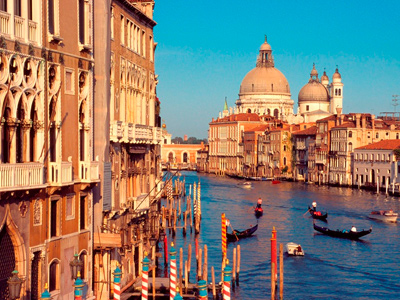| Official Name: | Italian republic | Population: | 57, 5 million people |
| Capital: | Rome | State language: | Italian |
| Form of Government: | Parliamentary Republic | Administrative division: | Italy is divided into 20 regions |
| International phone code: | 39 | Time difference with Moscow: | -2 hours |
| Monetary unit: | Euro (EUR) | Rate: | 1 EUR = 91.21 RUR |
EDUCATIONAL INSTITUTIONS
- Year-Round Language Courses
- Summer and Vacation Programs
- Secondary Education and Pre-University Preparation
- Undergraduate Courses
- Postgraduate Courses and MBA
- Professional Training and Internships

INFORMATION ABOUT ITALY AND ITS EDUCATION SYSTEM
Basic information about Italy.
Italy is situated in southern Europe, in the centre of the Mediterranean. Due to its geographical location, it has been a bridge between different cultures and civilizations for centuries. The territory of the country includes the mainland and the islands of Sicily and Sardinia, as well as some other smaller islands. Most of the cultural sites included in the UNESCO List of World Cultural and Natural Heritage Sites and one of the most ancient universities in the world (in Bologna) can be found in Italy. Italy has a population of 58 million. The official language is Italian, which is spoken by 94% of the population as the mother tongue. There are several ethnic and linguistic minorities, such as the German speaking population (0.5%), Albanians (0.17%), Slovenes (0.12%), and a small number of Greeks (0.03%) and French speakers (0.03%). Rome, the capital of the country, is also the location of the Vatican City State. In 1957, an agreement was signed in Rome that marked the birth of the European Union.
Higher education in Italy.
Italian higher education is structured as a binary system consisting of two main sectors:
• The university sector;
• The non-university sector.
The University Sector
At present, the university sector is made up of 83 university institutions consisting of:
• 58 state universities (Universita statali);
• 17 non-state universities (legally recognised by the state) (Universita non statali, legalmente
riconosciute);
• 2 universities for foreigners (Universita per Stranieri);
• 3 higher schools specializing in postgraduate university studies (Scuole Superiori);
• 3 polytechnical universities (Politecnici).
The Non-University Sector
The non-university sector includes 4 different types of educational institution:
• Higher schools of design: polytechnics for the arts, academies of fine art, higher institutes of applied art, music conservatories and recognized music institutes, higher institutes of music and choreographic studies, national academies;
• Higher schools of language studies;
• Higher integrated education (FIS): programmes of higher technical education and training (IFTS);
• A few specific fields (e.g. archiving, diplomacy, restoration, military studies, etc.) which, along with their respective institutions, come under the supervision of their corresponding ministries.
University level first stage: First Cycle
In 2001-2002, new teaching regulations were implemented. Two main different types of programmes and degrees will co-exist in Italian universities for some years, traditional courses based on the previous regulations, which are gradually disappearing, and new courses. Under the new system, undergraduate studies consist of Corsi di Laurea (CL, first degree courses) aimed at guaranteeing students adequate command of general scientific methods and knowledge, as well as specific professional skills. First degree courses last three years.
University level second stage: Second Cycle
Under the new system, graduate studies include Corsi di Laurea Specialistica (CLS), Corsi di Specializzazione di 1° livello (CS1) and Corsi di Master Universitario di 1° livello (CMU1). The duration of the courses varies from two to three years.
University level third stage: Third Cycle
In the new system, postgraduate studies include Corsi di Dottorato di Ricerca-CDR (research doctorate programmes), Corsi di Specializzazione di 2° livello-CS2 (second level specialization courses) and Corsi di Master Universitario di 2° livello-CMU2 (second level university Masters degree courses).

 +7 (495) 228 03 00
+7 (495) 228 03 00
 Italy
Italy


